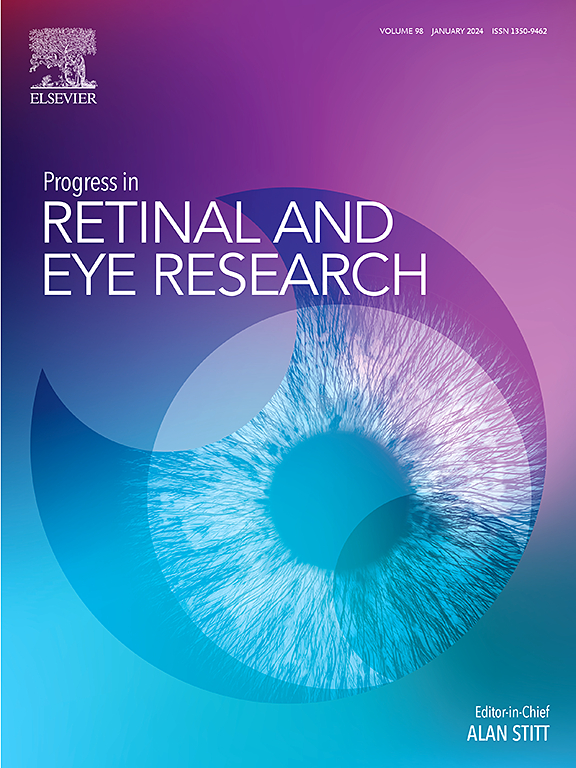Müller cells trophism and pathology as the next therapeutic targets for retinal diseases
IF 14.7
1区 医学
Q1 OPHTHALMOLOGY
引用次数: 0
Abstract
Müller cells are a crucial retinal cell type involved in multiple regulatory processes and functions that are essential for retinal health and functionality. Acting as structural and functional support for retinal neurons and photoreceptors, Müller cells produce growth factors, regulate ion and fluid homeostasis, and facilitate neuronal signaling. They play a pivotal role in retinal morphogenesis and cell differentiation, significantly contributing to macular development.
Due to their radial morphology and unique cytoskeletal organization, Müller cells act as optical fibers, efficiently channeling photons directly to the photoreceptors. In response to retinal damage, Müller cells undergo specific gene expression and functional changes that serve as a first line of defense for neurons, but can also lead to unwarranted cell dysfunction, contributing to cell death and neurodegeneration. In some species, Müller cells can reactivate their developmental program, promoting retinal regeneration and plasticity—a remarkable ability that holds promising therapeutic potential if harnessed in mammals.
The crucial and multifaceted roles of Müller cells—that we propose to collectively call “Müller cells trophism"—highlight the necessity of maintaining their functionality. Dysfunction of Müller cells, termed “Müller cells pathology,” has been associated with a plethora of retinal diseases, including age-related macular degeneration, diabetic retinopathy, vitreomacular disorders, macular telangiectasia, and inherited retinal dystrophies.
In this review, we outline how even subtle disruptions in Müller cells trophism can drive the pathological cascade of Müller cells pathology, emphasizing the need for targeted therapies to preserve retinal health and prevent disease progression.
视网膜疾病的下一个治疗靶点是视网膜细胞的营养和病理
本文章由计算机程序翻译,如有差异,请以英文原文为准。
求助全文
约1分钟内获得全文
求助全文
来源期刊
CiteScore
34.10
自引率
5.10%
发文量
78
期刊介绍:
Progress in Retinal and Eye Research is a Reviews-only journal. By invitation, leading experts write on basic and clinical aspects of the eye in a style appealing to molecular biologists, neuroscientists and physiologists, as well as to vision researchers and ophthalmologists.
The journal covers all aspects of eye research, including topics pertaining to the retina and pigment epithelial layer, cornea, tears, lacrimal glands, aqueous humour, iris, ciliary body, trabeculum, lens, vitreous humour and diseases such as dry-eye, inflammation, keratoconus, corneal dystrophy, glaucoma and cataract.

 求助内容:
求助内容: 应助结果提醒方式:
应助结果提醒方式:


